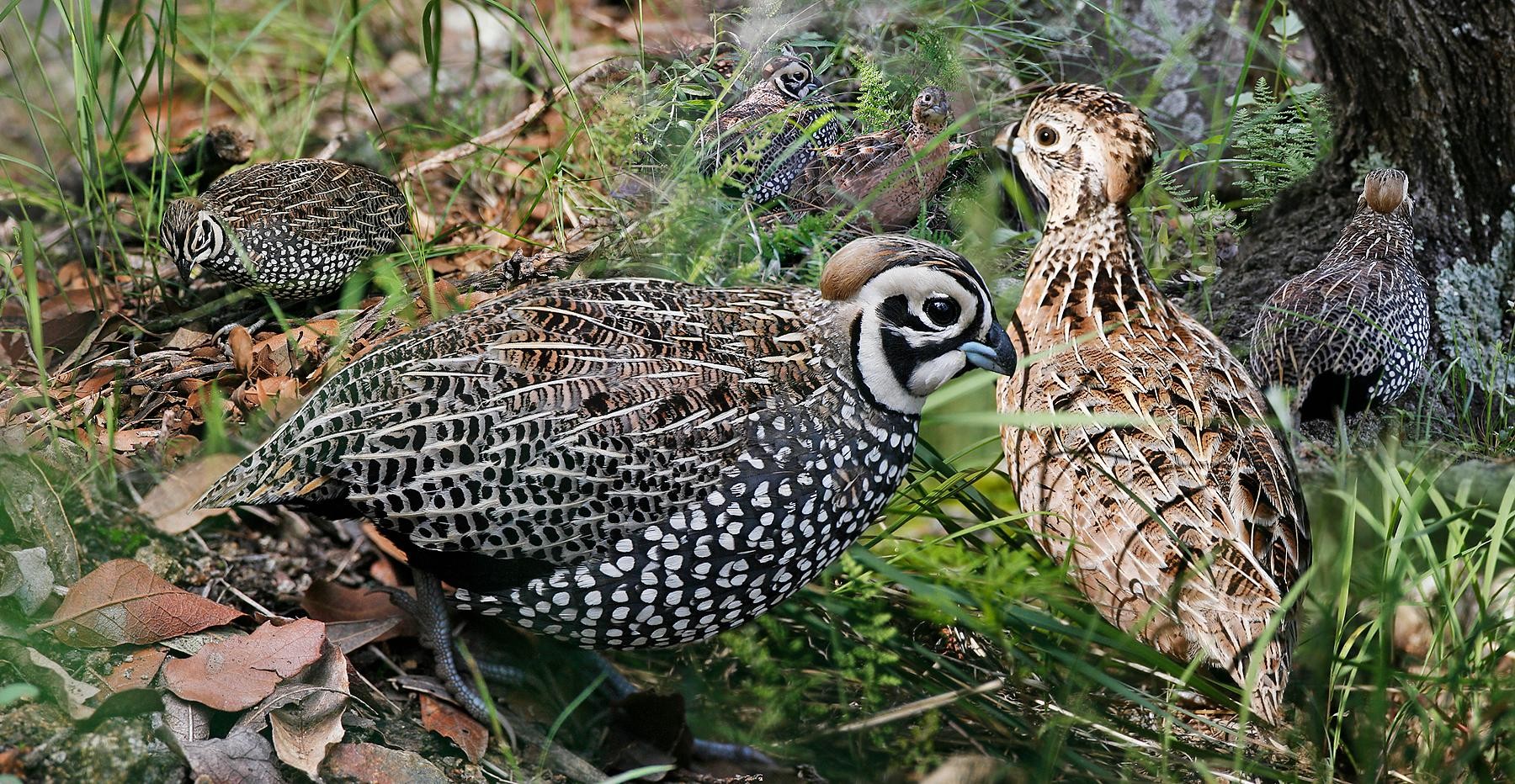Montezuma Quail
A species of Montezuma and Ocellated Quails, Also known as Mearns Quail Scientific name : Cyrtonyx montezumae Genus : Montezuma and Ocellated Quails
Montezuma Quail, A species of Montezuma and Ocellated Quails
Also known as:
Mearns Quail
Botanical name: Cyrtonyx montezumae
Genus: Montezuma and Ocellated Quails
Content
Description General Info
 Photo By Richard Crossley , used under CC-BY-SA-3.0 /Cropped and compressed from original
Photo By Richard Crossley , used under CC-BY-SA-3.0 /Cropped and compressed from original Description
At about 22 cm (8.75 in), it is one of the shortest quails of North America, although it weighs 180 g (6 oz), the same as some Callipepla quails that are somewhat taller. It has an even plumper build and shorter tail than other quails. Both sexes have the back and wing coverts tan with longitudinal light-buff streaks formed by the feather shafts and circular or transversely oblong black spots arranged in bars. A crest on the nape makes the profile distinctively long front-to-back. The bill is black above and bluish-gray below. The adult males have a striking, swirling black-and-white face pattern. A single tan plume lies flat over the crest. Their sides are blue-gray (often looking black) with bold spots, which in northern birds are white and in southern birds are white towards the front and chestnut towards the back. The middle of the chest and belly is dark brown in northern birds, lighter and tawnier in southern birds. Females have a suggestion of the male's face pattern. Their underparts are light brown with a few fine black shaft streaks and other lines. Juveniles resemble females, but the underparts are grayish with white shaft streaks and black dots. Immature males develop the adult side pattern early, but do not develop the face pattern till early winter. An unusual feature of this species is its long, sickle-shaped claws, which it uses for digging. 
Size
20-23 cm (8-9 in)
Colors
Brown
Black
Bronze
Gray
White
Life Expectancy
7 years
Nest Placement
Ground
Clutch Size
2 - 15 eggs
Feeding Habits
Montezuma Quail primarily consume tubers, acorns, and insects, foraging on the ground by digging with their strong feet and long claws. They typically feed on hillside crevices, under shrubs, and near rocks. Key plant foods include Drummond's wood-sorrel, sedges, and in summer, their diet diversifies to beetles, grasshoppers, ants, and various seeds.
Habitat
Montezuma Quail predominantly reside in open woodlands at elevations from 1,600 to 10,000 feet. Their habitats are comprised of oak, pine-oak, or juniper forests with native bunchgrasses undergrowth. They thrive in hilly areas like slopes and canyons but steer clear of deserts and the Río Balsas valley. The species adapts to various vegetation types ranging from streamside maples and sycamores to high-altitude yucca and mountain mahogany.
Nest Behavior
Montezuma Quail engage in cooperative nest construction. Both male and female partake in building the nest chamber. Egg-laying patterns and parental care habits are shared by both parents, ensuring the survival and protection of their offspring.
Nest Characteristics
The nest of montezuma Quail is often placed on grassy hillsides or level ground, typically situated near a large rock or tree. It consists of a chamber intricately woven from grasses, stems, and leaves, with a fine-grass lining. The nest's interior dimensions are about 5.5 inches wide and 4.5 inches tall, sometimes integrated into living vegetation.
Dite type
Omnivorous
General Info
Feeding Habits
Bird food type
Bird Feeder Type

Ground
Behavior
Montezuma Quail exhibit primarily monogamous mating systems and display unique reproductive strategies, particularly during productive seasons. Exceptionally, females may engage with two males sequentially, initiating separate broods with each, before exclusively entrusting them with incubation and chick-rearing duties. Juveniles display strong familial bonds, often remaining with parents well into maturity. Daily, montezuma Quail forage and interact within their habitat, typically concluding their activity with communal roosting on southeastern-facing slopes, where they form a protective circle facing outward, often sheltered by vegetation or geological features.
Species Status
Not globally threatened.